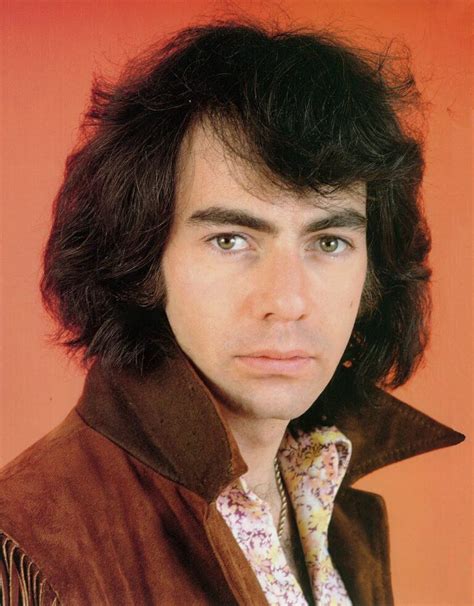The emergence of Neil Diamond as a musical force in the 1960s was a pivotal moment in the history of popular music. Born on January 24, 1941, in Brooklyn, New York, Diamond’s early life was marked by a strong foundation in music, courtesy of his mother, Rose, who encouraged his singing from a young age. This nurturing environment played a significant role in shaping Diamond’s musical talents, ultimately leading him to become one of the most successful and enduring singer-songwriters of his generation.
Early Influences and Career Beginnings
Diamond’s musical journey began with influences from the folk scene of the 1950s and early 1960s. Artists like Pete Seeger and Woody Guthrie inspired him, though his unique voice and style would soon set him apart. After attending Erasmus Hall High School, where he befriended future collaborator and fellow musician, Barbra Streisand, Diamond enrolled in New York University (NYU), initially aiming to pursue a career in medicine. However, his passion for music soon took precedence, leading him to drop out of NYU and sign with Sunbeam Music Publishing in 1962.
The Brill Building and Songwriting Success
The early 1960s found Diamond among the throngs of aspiring songwriters flocking to the Brill Building in Manhattan, a hub of musical creativity and industry. It was here that Diamond honed his craft, penning songs that would become hits for other artists. His breakthrough as a songwriter came with “Sunday and Me,” recorded by Jay and the Americans, but it was his work with The Monkees, particularly the hit single “I’m a Believer,” that catapulted him to national recognition. This success not only demonstrated Diamond’s skill as a songwriter but also paved the way for his own performing career.
Solo Career and Musical Evolution
Neil Diamond’s transition to a solo artist was marked by the release of his debut single, “Solitary Man,” in 1966, followed by his first album, “The Feel of Neil Diamond,” in 1966. These early works showcased Diamond’s ability to craft meaningful, often deeply personal songs that resonated with a wide audience. Throughout the late 1960s and into the 1970s, Diamond continued to evolve as an artist, experimenting with different sounds and themes in his music. Albums such as “Brother Love’s Travelling Salvation Show” (1969) and “Tap Root Manuscript” (1970) demonstrated his growing eclecticism and depth as a songwriter.
Peak Success and Enduring Legacy
The 1970s were a pinnacle of success for Neil Diamond, with albums like “Moods” (1972), “Jonathan Livingston Seagull” (1973), and “Serenade” (1974) achieving significant commercial success and critical acclaim. His live performances, including a 1972 concert at the Greek Theatre in Los Angeles, further solidified his reputation as a dynamic and engaging stage presence. Diamond’s ability to connect with audiences through his music, coupled with his distinctive, resonant voice, has allowed him to maintain a loyal fan base across generations.
Later Career and Recognition
In the decades following his peak in the 1970s, Neil Diamond continued to release new music and perform to sold-out crowds. His contributions to music were recognized with numerous awards, including his induction into the Songwriters Hall of Fame (1984), the Rock and Roll Hall of Fame (2001), and the Grammy Lifetime Achievement Award (2009). Diamond has also been honored with a star on the Hollywood Walk of Fame, a testament to his enduring impact on popular music.
Conclusion
Neil Diamond’s journey from a young singer-songwriter in the Brill Building to a global superstar is a narrative of perseverance, creativity, and a deep passion for music. His ability to evolve as an artist while remaining true to his unique voice and vision has ensured his work continues to resonate with audiences today. As a singer, songwriter, and performer, Neil Diamond represents a legacy of excellence in the music industry, his contributions standing as a lasting tribute to the power of music to inspire, to heal, and to bring people together.
What were Neil Diamond’s early musical influences?
+Neil Diamond’s early musical influences were rooted in the folk scene of the 1950s and early 1960s, with artists like Pete Seeger and Woody Guthrie playing significant roles in shaping his musical style and aspirations.
How did Neil Diamond’s career as a songwriter begin?
+Neil Diamond’s career as a songwriter began when he signed with Sunbeam Music Publishing in 1962. He then worked in the Brill Building, writing songs for other artists, including Jay and the Americans and The Monkees, before launching his successful solo career.
What are some of Neil Diamond’s most notable albums and songs?
+Some of Neil Diamond’s most notable works include the albums “Brother Love’s Travelling Salvation Show,” “Tap Root Manuscript,” “Moods,” “Jonathan Livingston Seagull,” and “Serenade,” as well as songs like “Solitary Man,” “Cherry, Cherry,” “Kentucky Woman,” and “I’m a Believer,” which was made famous by The Monkees.
What awards and recognitions has Neil Diamond received for his contributions to music?
+Neil Diamond has been recognized with numerous awards, including induction into the Songwriters Hall of Fame, the Rock and Roll Hall of Fame, and the receipt of the Grammy Lifetime Achievement Award. He also has a star on the Hollywood Walk of Fame, symbolizing his enduring impact on popular music.



